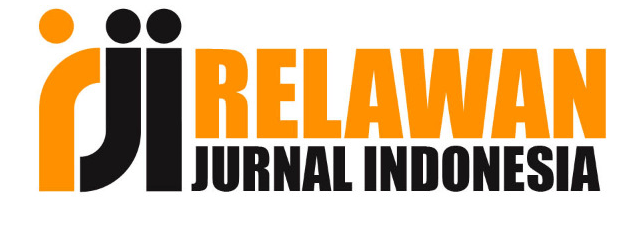PEMBERIAN MADU TERHADAP GRADE LUKA GANGREN PADA PASIEN DIABETES MELLITUS TIPE II POST OPERASI DEBRIDEMENT
Abstract
Symptoms of tingling, pain in the hands and feet and reduced sensitivity or numbness will be very dangerous for the sufferer because if the sufferer is injured in the leg or hand the sufferer will not feel pain. Wounds will become more difficult to heal and then become ulcers/ulcers and can also become gangrene. Objective: To know the effect of honey administration on the degree of gangrene wounds in patients with diabetes mellitus. Methods: The research method used is a quasi-experiment design method using one design pre-test and post-test approach that compares subjects before and after giving honey therapy. Results: obtained 0,005 in the present by comparing the p-value to the critical p value is 0.05. The results of the influence test show that the degree of gangrene wound after giving treatment using honey in the Anggrek-Sakura Room of RSU Bhakti Asih Ciledug Tangerang normal distribution of 0.441. Conclusion: there is an influence of the administration of honey therapy against the grade of the gangrenous wound in patients with diabetes mellitus type 2 post-operation debridement. Recommendation: From the results of this study, it is expected that educational institutions can improve and define various educational programs that can disseminate information about the administration of honey for grade gangrene wounds in patients with type 2 diabetes mellitus.
Abstrak
Kondisi gejala kesemutan, nyeri pada tangan dan kaki serta berkurangnya sensitivitas atau mati rasa akan sangat berbahaya bagi penderita karena apabila penderita terluka dikaki atau tangan penderita tidak akan merasa sakit. Luka akan semakin sukar sembuh dan kemudian menjadi ulkus/borok dan bisa juga menjadi luka gangren. Tujuan: Mengetahui pengaruh pemberian madu terhadap grade luka gangren pada pasien diabetes mellitus. Metode: Metode penelitian yang digunakan adalah metode quansi eksperiment design dengan menggunakan pendekatan one design pre-test dan post-test yaitu membandingkan subjek sebelum dan sesudah diberikan terapi madu. Hasil: Diperoleh p value 0,005 di tunjukan dengan membandingkan nilai p terhadap nilai p kritis yaitu 0,05. Hasil uji pengaruh diketahui bahwa grade luka gangren sesudah diberikan perawatan terapi menggunakan madu di Ruang Anggrek-Sakura RSU Bhakti Asih Ciledug Tangerang berdistribusi normal sebanyak 0,441 Kesimpuan: Bahwa ada pengaruh pemberian terapi madu terhadap grade luka gangren pada pasien diabetes mellitus tipe 2 post operasi debridement. Saran: dari hasil penelitian ini diharapkan institusi Pendidikan dapat meningkatkan dan menentukan berbagai program pendidikan yang dapat menyebarluaskan informasi tentang pemberian madu terhadap grade luka gangren pada pasien diabetes mellitus tipe 2.
Keywords
Full Text:
PDFReferences
Abougalambou, S. S. I. et al. (2011) ‘Prevalence of vascular complications among type 2 diabetes mellitus outpatients at teaching hospital in Malaysia’, J Diabetes Metab, 2(115), pp. 1–4.
Adji Suranto, S. (2004) Khasiat & manfaat madu herbal. AgroMedia.
American Diabetes Association (2020) ‘Standards of medical care in diabetes—2020’, Diabetes care, 32(Suppl 1), p. S13.
Ayu, N., Iswandi, D. and Risti, G. (2019) ‘Terapi Madu Pada Penderita Ulkus Diabetikum’, MEDULA, medicalprofession journal of lampung university, 9(1), pp. 192–1197.
Chloranyta, S., Junaidi, E. and Kartono, J. (2021) ‘Perbaikan Ulkus Diabetik Dengan Penerapan Latihan Range Of Motion Ekstremitas Bawah Pada Diabetes Tipe 2’, Madago Nursing Journal, 2(2), pp. 48–57.
Dhillon, J., Sopacua, E. and Tandanu, E. (2022) ‘INCIDENCE OF DIABETIC GANGRENE IN PATIENTS WITH TYPE 2 DIABETES MELITUS AT ROYAL PRIMA HOSPITAL’, Jambura Journal of Health Sciences and Research, 4(1), pp. 453–460.
Diani, N. (2013) ‘Pengetahuan dan praktik perawatan kaki pada klien diabetes melitus tipe 2 di kalimantan selatan’, Universitas Indonesia.
Eka Fitria, E. F. et al. (2017) ‘Karakteristik Ulkus Diabetikum pada Penderita Diabetes Mellitus di RSUD dr. Zainal Abidin dan RSUD Meuraxa Banda Aceh (Characteristics Of Ulcer Among Diabetes Mellitus Patient In Rsud Dr. Zainal Abidin and Rsud Meuraxa Banda Aceh)’, Buletin Penelitian Kesehatan, 45(3), pp. 153–160.
Ferawati, I. (2014) ‘Faktor-Faktor Yang Mempengaruhi Terjadinya Ulkus Diabetikum Pada Pasien Diabetes Melitus Tipe 2 Di Rsud Prof. Dr. Margono Soekarjo Purwokerto’, Skripsi. Purwokerto. Kementerian Pendidikan Dan Kebudayaan Universitas.
Gunawan, N. A. (2017) ‘Madu: Efektivitasnya Dalam untuk Perawatan Luka’, Cermin Dunia Kedokteran, 44(2), p. 399678.
IDF (2019) ‘International Diabetes Federation. In The Lancet’, 266(6881).
Karimi, Z. et al. (2019) ‘Impact of olive oil and honey on healing of diabetic foot: a randomized controlled trial’, Clinical, cosmetic and investigational dermatology, pp. 347–354.
Kartika, R. W. (2015) ‘Perawatan luka kronis dengan modern dressing’, Cermin Dunia Kedokteran, 42(7), p. 400225.
Nabhani, N. and Widiyastuti, Y. (2017) ‘Pengaruh Madu Terhadap Proses Penyembuhan Luka Gangren Pada Pasien Diabetes Mellitus’, Profesi (Profesional Islam): Media Publikasi Penelitian, 15(1), p. 69.
Purwanti, O. S. et al. (2012) Analisis faktor-faktor risiko terjadi Ulkus Kaki pada pasien Diabetes Melitus di RSUD Dr. Moewardi. Universitas Indonesia. Available at: https://lib.ui.ac.id/detail.jsp?id=20335855.
Rahman, S. and Rahmayani, D. (2016) ‘Efektivitas Penggunaan Madu Campuran Terhadap Proses Penyembuhan Luka di Poli Kaki Diabetik Rumah Sakit Umum Daerah Ulin Banjarmasin Tahun 2016’, DINAMIKA KESEHATAN: JURNAL KEBIDANAN DAN KEPERAWATAN, 7(2), pp. 301–319.
Riskesdas, K. (2018) ‘Hasil utama riset kesehata dasar (RISKESDAS)’, Journal of Physics A: Mathematical and Theoretical, 44(8), pp. 1–200.
Sari, N. P. and Sari, M. (2020) ‘Pengaruh Pemberian Topikal Madu Kaliandra Terhadap Jaringan Granulasi Pada Luka Diabetes Melitus’, Jurnal Ilmu Keperawatan Indonesia (JIKPI), 1(2).
Siswantoro, E. (2017) ‘Efektifitas perawatan luka diabetik metode modern dressing menggunakan madu terhadap proses penyembuhan luka’, Jurnal Keperawatan dan Kebidanan, 8(1).
Soewondo, P., Ferrario, A. and Tahapary, D. L. (2013) ‘Challenges in diabetes management in Indonesia: a literature review’, Globalization and health, 9, pp. 1–17.
Sundari, F. and Tjahjono, H. D. (2017) ‘Pengaruh Terapi Madu Terhadap Luka Diabetik Pada Pasien Dengan Diabetes Mellitus Tipe 2 Di RW 011 Kelurahan Pegirian Surabaya’, Jurnal Keperawatan, 6(1), pp. 28–35.
TUMANGGOR, W. A. (2019) HUBUNGAN SELF CARE DENGAN KUALITAS HIDUP PASIEN DIABETES MELITUS DI RUMAH SAKIT SANTA ELISABETH MEDAN 2019. SEKOLAH TINGGI ILMU KESEHATAN SANTA ELISABETH MEDAN. Available at: https://repository.stikeselisabethmedan.ac.id/wp-content/uploads/2019/08/WIRNASARI-A-TUMANGGOR-032015102.pdf.
Unayah, M., Betty, B., Fitriani, D., Marsiwi, A. R., Fitriani, D. D., Pratiwi, R. D., ... & Silviani, Y. T. (2021). Promosi Kesehatan Tentang Kepatuhan Diet Diabetes Melitius pada Warga Babakan Pocis RT 01 RW 03 Kelurahan Kecamatan Setu. JAM: Jurnal Abdi Masyarakat, 2(2), 106-110.
DOI: https://doi.org/10.52118/edumasda.v8i1.216
Refbacks
- There are currently no refbacks.
Copyright (c) 2024 Safitri Rahayu, Riris Andriati, Rita Dwi Pratiwi, Defi Anggara Pratama, Fenita Purnama Sari Indah

This work is licensed under a Creative Commons Attribution-NonCommercial-ShareAlike 4.0 International License.
Sekolah Tinggi Ilmu Kesehatan Kharisma Persada
Pajajaran Street Number 1 Pamulang,
South Tangerang City, Banten Province, Indonesia, 15417
Telephone: 021-74716128 / Handphone : 081384462729

Edu Masda Journal by Sekolah Tinggi Ilmu Kesehatan Kharisma Persada is licensed under a Creative Commons Attribution-ShareAlike 4.0 International License.
Based on a work at http://openjournal.masda.ac.id/index.php/edumasda/index.




